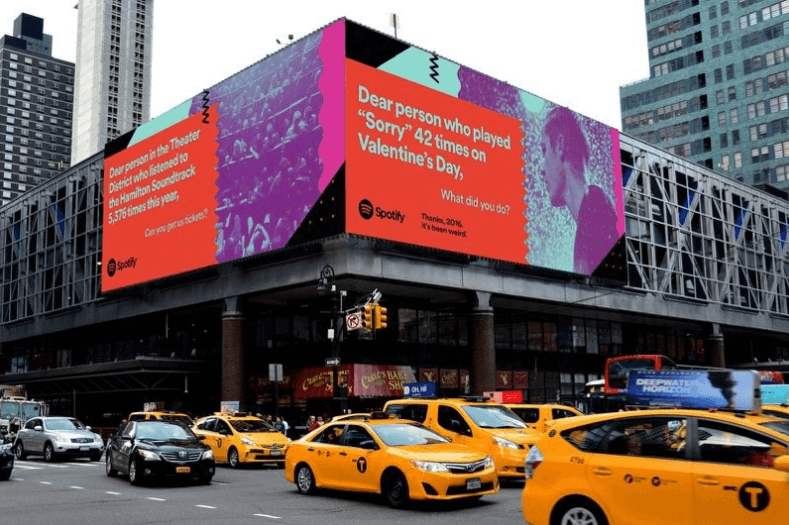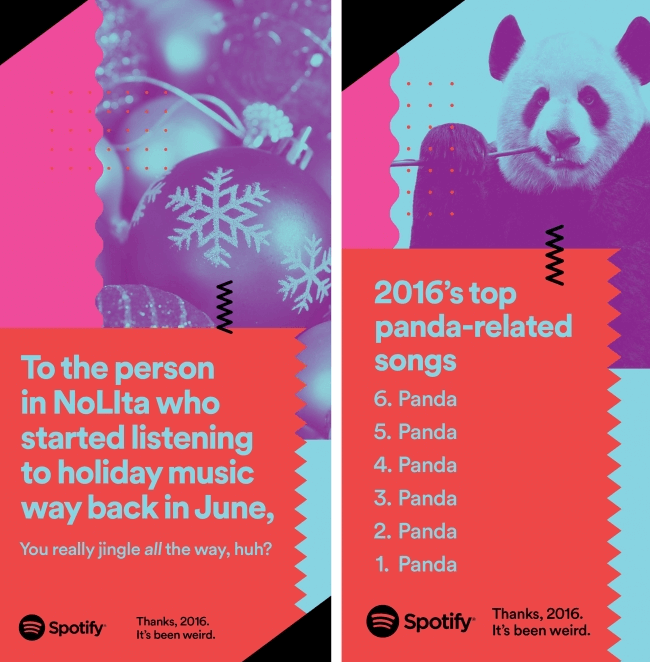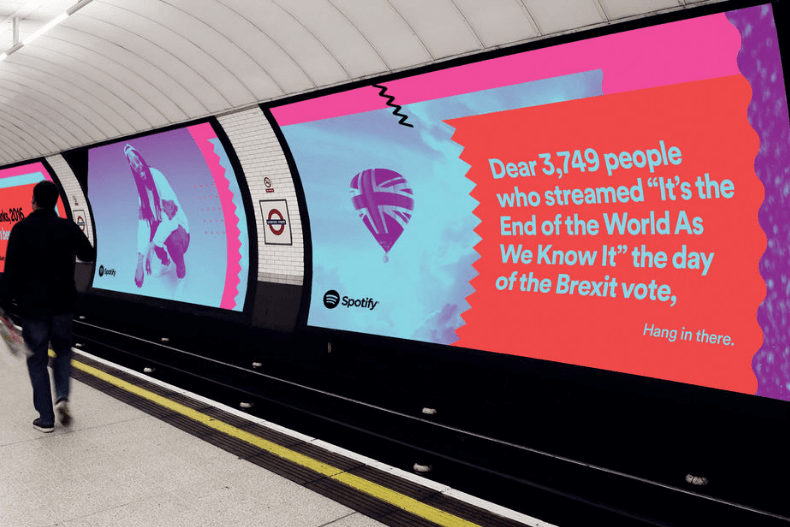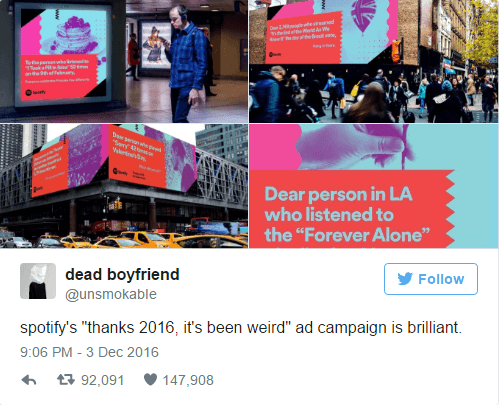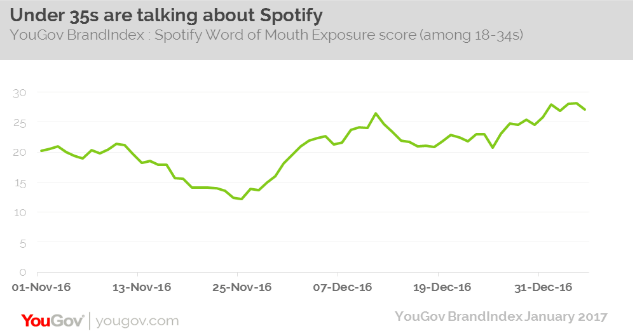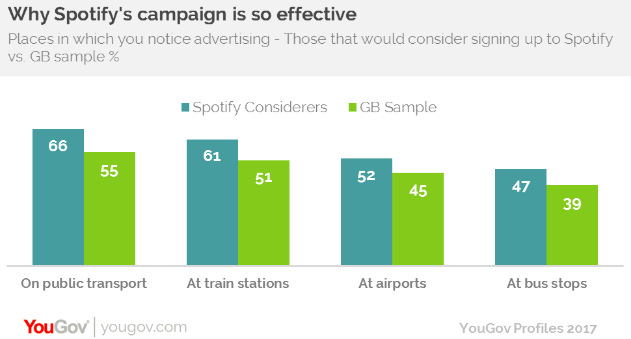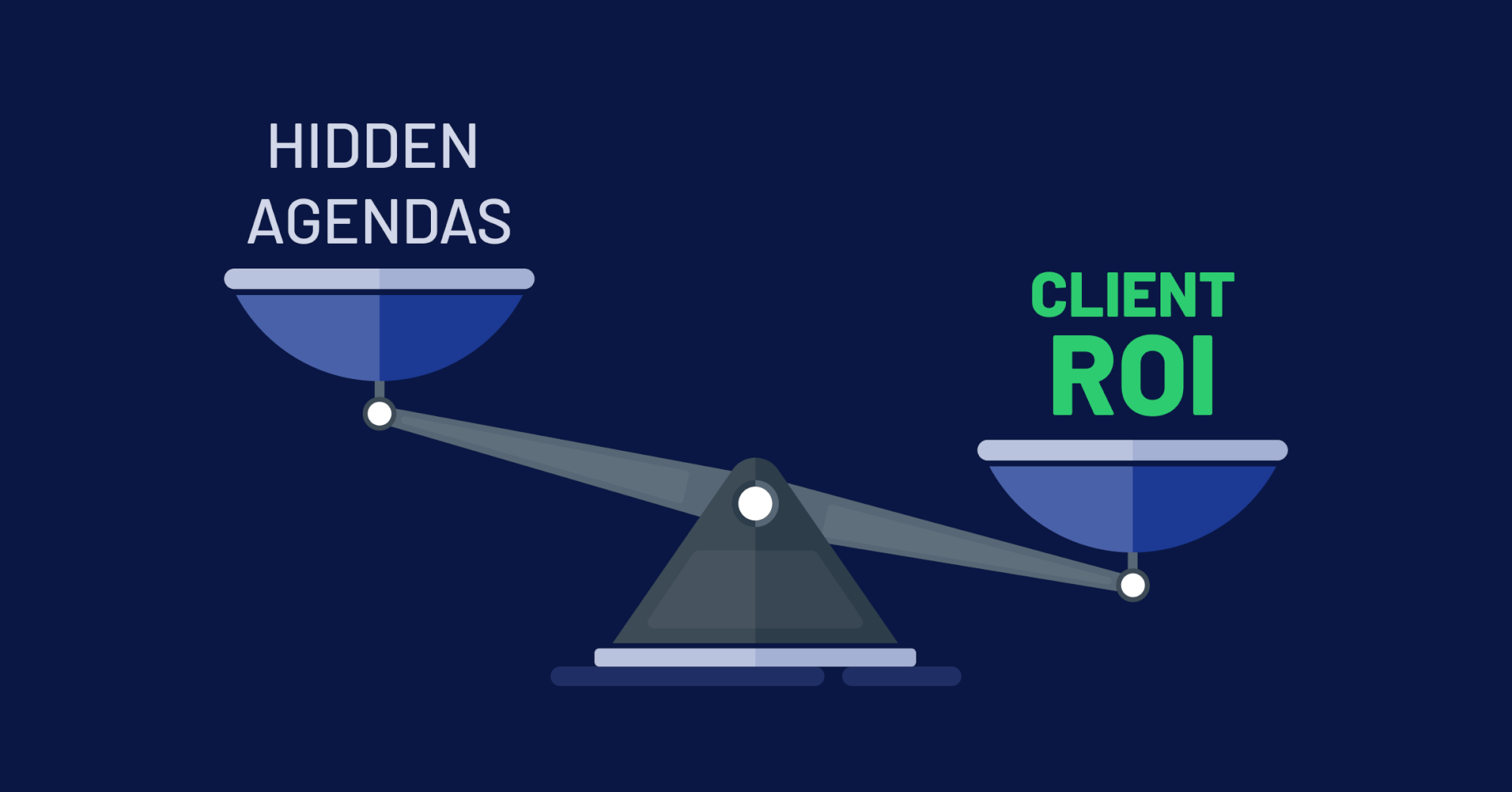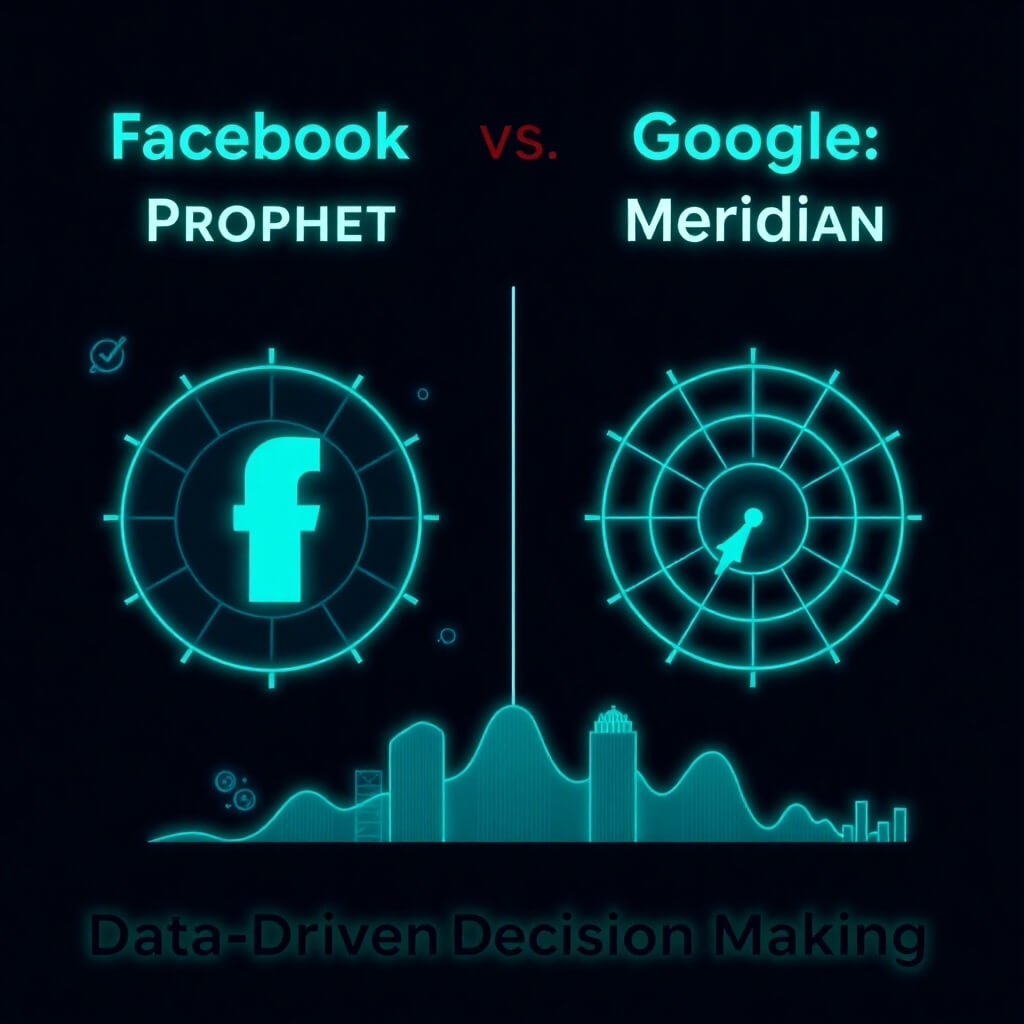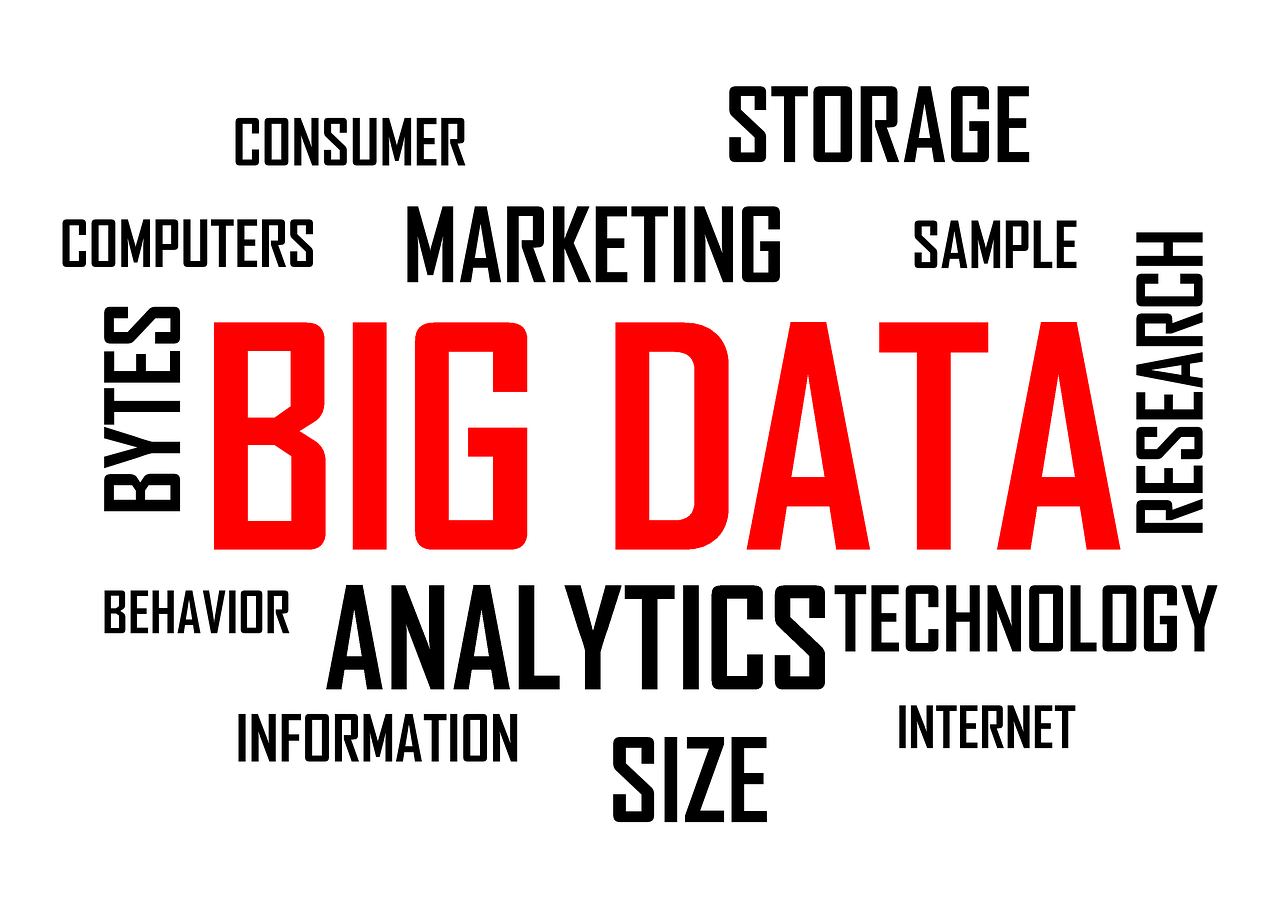
Big Data is the latest BIG word, as small data shows major insights teased from big data. One of the most prominent areas used in Big Data is marketing: The information we collect through various measurements and analyses of our audience and its actions allow us to gain insights into the brand performance. However, usually the data and analysis remain behind the scenes.
Brands thinking that the audience will not be interested in their insights. But recently, it seems this mindset is changing.
Last November, Spotify came out with a huge campaign, summarizing 2016 music. Billboards placed at key locations in 14 countries around the world, presented the funny, interesting and strange users habits of listeners throughout the year.
Spotify found these nuggets from the data they collected, such as the number of times users listened to certain songs, popular songs in various geographical regions, playlists users created and much more. The campaign has gotten both surprised and amused comments from people exposed to it, and praises from the media.
So what was so special about the Spotify campaign, and why did it get so much BUZZ?
Creating the campaign
The campaign began on November 28th, 2016, with billboards placed at key intersections, bus stops and subway stations in the United States, Britain, France, and Germany.
In New York, the following signs were set up
For those who find it difficult to read, the sign on the left refers to the blockbuster musical “Hamilton” on Broadway, which has a waiting list to stand for a few months at least : “Dear person in the Theater District who listened to the Hamilton Soundtrack 5,376 times this year, can you get us tickets?”
In another pair of signs, there is a reference to the hit “Panda” and to people who are starting to listen to Christmas songs in the summer:
A sign in London mentions one historical moment experienced by the UK this year – the Brexit
Later in the campaign more signs were placed in 10 other countries: Canada, Australia, New Zealand, Mexico, Argentina, Brazil, Denmark, Sweden, Indonesia and the Philippines. As you can see, part of the signs are more general, and some clearly refer to local events or trends.
Additionally, in some signs, there appears below the caption: “Thanks, 2016. It’s been weird” which is actually the unifying line of the campaign, that “winks” at the past year on a variety of bizarre and tragic incidents on the one hand, and on the other hand – to the soundtrack that formed our lives while we experienced those moments.
The creative team of Spotify in New York is responsible for the campaign, based on data received from Spotify’s teams all over the world, and is considered the largest global ad campaign from Spotify so far. Apart from billboards, the campaign included custom emails that were sent to users, as well as sponsored advertising on social networks and other digital means.
According to Seth Farbman, Spotify’s CMO, “the idea for the data-driven campaign originated with 2015’s end-of-year “Year in Music” campaign, as it transpired that data from listeners in different geographical areas provided some interesting insights. That led to the idea of reflecting culture via listener behavior.”
Campaign Results
The goal of this campaign was primarily to strengthen the brand; to preserve the 40 million existing users of Spotify and to attract new users, mainly due to the success of Apple Music, which recently opened to everyone and no longer restricted only to Apple’s users.
Did it work? It seems so. As expected, many people saw the billboards, took pictures of them and uploaded them to social networks, and thus contributed to the spread of the campaign. (Look at the number of shares)
One of the campaign shares on “Imgur” got more than 400 thousand views and 16 thousand upvotes ( the parallel of Facebook’s likes ). Also, the campaign got references from sites like Adweek, The Verge, The Independent, shows online, NBC, Business Insider and Bored Panda.
Market research firm, YouGov, which is investigating topics like brand perception and consumer behavior, analyzed the responses to the campaign and reached the following results: in the days after the campaign, ad index advertisements of Spotify among all respondents increased by 5 points. Among people under age 35, which are apparently the main target group of Spotify, the score rose even higher.
YouGov noted that during the campaign, Spotify also posted a special offer to sign up for their premium account – which must have led to increased public awareness. Another interesting statistic is the segmentation of Spotify, particularly about ads hanging out at public transportation, that was quite accurate: the data of YouGov suggests that users who considered register to Spotify belong more likely to the passengers of public transportation (This makes sense when one recalls that it was a young and Urban audience not holding a vehicle for economic reasons and/or for reasons of convenience and time savings);
The secret of success of the campaign
So how can we explain the success of Spotify’s campaign, connecting the modern digital services (music app) into a traditional marketing (billboards)? It seems like a combination of several key factors.
- Creative use of Data. As mentioned above, this is not the first time Spotify uses the data it collects about its users for marketing purposes. Spotify rose on to something: the dry statistics can be found in surprising insights related to users’ emotions and behavior and in the broader prism – culture and history. The music we listen to and the way we listen to it (timing, frequency, repetition, and creating playlists according to different topics ) are determined mostly by our personal events in life. A clear example of this is what happens when a loved artist dies – not only radio stations plays his songs in memory, but we also like to remember and listen to his songs, even if we’ve not listened to them for a long time.
- Relevance. The selected campaign slogan, “Thanks, 2016. It’s been weird” is not random. Over the last few months of 2016, many people around the world have expressed this sentiment. 2016 was a year brimming with tragedies – serious terror attacks from France to the United States, the death of beloved celebrities, and controversial world events, such as the Brexit in the UK and the US elections. Each time such an event has happened, social networks were filled with words of sadness, anger, despair and disbelief, especially craving for this year to be over. Spotify made an ingenious connection between the events that shaped 2016 and the soundtrack that accompanied its users throughout the year and often echoed the global events. Another aspect with the signs emphasizing their relevance was the adjustment of the physical location where the messages were placed: a message about “Brexit” in London, “Hamilton” in New York and so on. A man walking down the street or waiting for the train, looks up and sees before him a humorous statement that connects the music he listens, where he lives, and to the event that closes to him; And it produces in him a sense of closeness and intimacy with the brand.
- Effortless. In this campaign, Spotify didn’t try to sell us something. It didn’t announce a new campaign or a new feature. It didn’t brag about the number of users. It didn’t compare itself to competitors. All it did was tell us fun trivia facts, quirky and interesting ways in which we used Spotify this year, and in a sense, even made a conversation. This is exactly the kind of small talk we will have with a colleague, laugh with friends or share on social networks. Spotify is already familiar enough to not be required to explain what it does – the logo is enough, and the rest of the ad can run wild.
Conclusion
The main message of the campaign is that sometimes, you do not have to look far: the best marketing idea lies in the data that we already have. The question is, of course, what to do with it. Spotify used it to “talk” with their users and to sum up the year with them.
What can you do with the data you have?
Overdrive Interactive is an award-winning digital marketing agency that helps leading companies compete and win in the online space. Founded in 2001, the agency has developed into an integrated digital shop that delivers brand building, customer acquisition and lead generation programs utilizing search marketing, social media marketing, online media buying, analytics and world class creative services.




